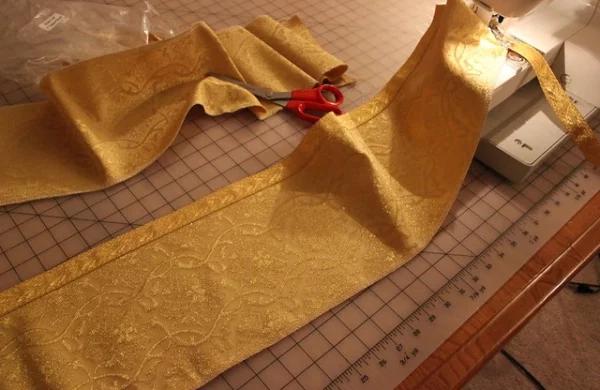
The Orphrey bands for the altar frontal will be cut from St. Hubert Gold/Gold. St. Hubert is a brocatelle Ecclesiastical Fabric originally designed by Sir Ninian Comper and produced by M. Perkins and Sons circa 1890. The fabric will be available on our new website shortly after the first of the year in several colorways, including Red/Gold, White/Gold, Blue/Gold, Black/Gold, and Gold/Gold as in the above photo. St. Hubert is one of my favorite go-to ecclesiastical fabrics. It cuts up well for use in orphrey bands. The above orphrey bands are approximately 7″ wide before adding any trims
Like this:
Like Loading...
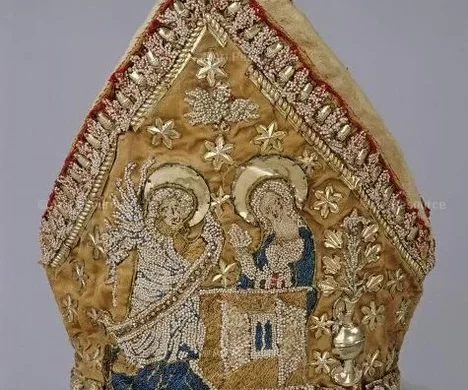
Goldwork and stunning colors set this Annunciation design apart from many others. There is a lovely write-up and information on this Cope Hood on Needle ‘n Thread.
Like this:
Like Loading...
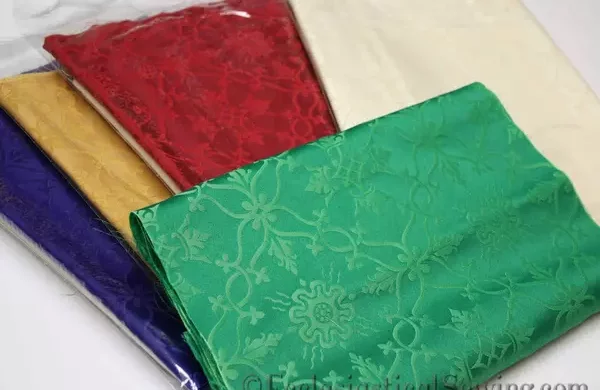
Pugin was a famous designer of churches and all of the needed furnishings in England in the early 1800s. He sadly died at the age of forty. But he has left a legacy of beautiful liturgical art. Pugin designed many items, including some stunning vestments. Today, the Victoria and Albert Museum houses a collection of his vestments.
Like this:
Like Loading...
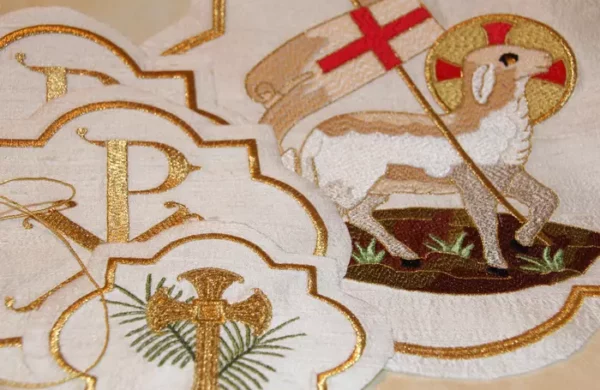
Pastoral stoles with machine-appliqué motifs are in progress. Using pre-made machine-embroidered patches, the Gold St. Benet trim is chosen for a finishing touch. The appliqué is then stitched onto the stole.
Like this:
Like Loading...
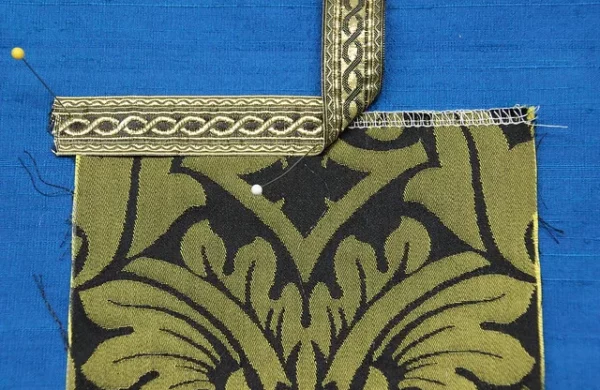
Sewing galloon trim to orphrey bands for pastoral stoles. Pre-make orphrey bands by pinning galloon trim to the base fabric before stitching. Ensure the surged edge is halfway up the trim to avoid fraying. Use an even feed foot on the sewing machine to prevent puckering. Stitch close to the galloon edge, back-stitching at the start and end. Repeat for each orphrey piece, maintaining even stitching. Check the position of the fourth piece to ensure alignment. This method reduces puckers and ensures a polished look for your pastoral stole. Happy sewing!
Like this:
Like Loading...
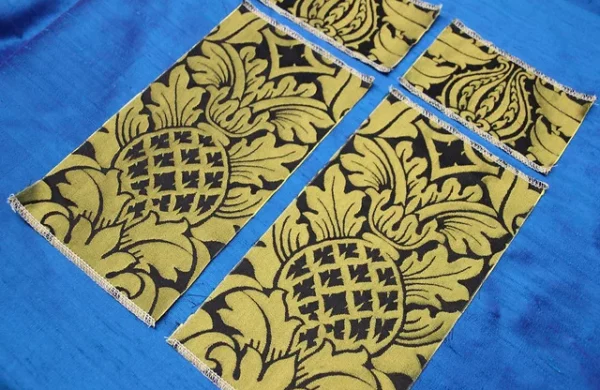
The St. Benet Black/gold trim is an excellent choice for either colored stole, as is the Black Dice trim, or the Gold St. Paul Braid.
Like this:
Like Loading...
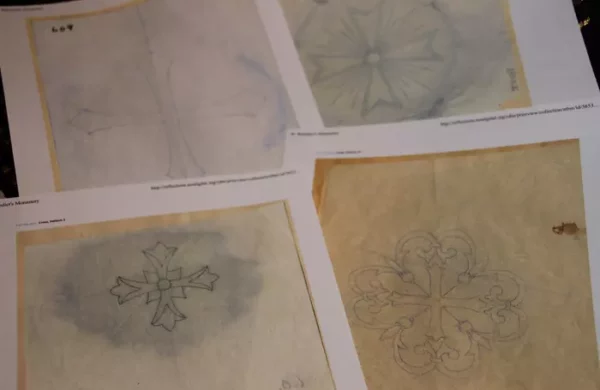
Fairford brocade offers two motifs: a pineapple and an ogee design. Choose the pineapple for the lower band and align it within selected cutting lines. Ensure minimal waste and use the ogee design for upper orphrey bands. Draw cutting lines with tailor’s chalk once satisfied with the design. Cut the motifs carefully, considering future usability of small fabric pieces.
Like this:
Like Loading...
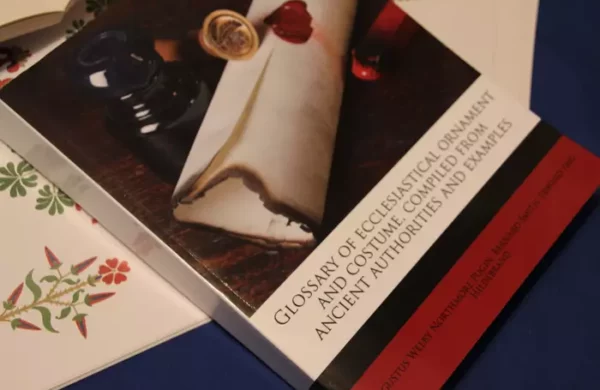
Glossary of Ecclesiastical Ornament, Augustus Pugin refers to ornamented garments of this type worn by ancient Romans as auriclavae or clavatae. Tunics were ornamented with a band referred to as a clavus or clavi. The bands, which were often purple in color, were sewn onto tunics.
Like this:
Like Loading...
The amice, which is one of the first vestment pieces that a priest puts on when vesting. it has lace edging around the sides. When one looks at the care of the tiny pleats in the lace at the corners, and the way the lace follows the linen in the folds, one can not help but to think the lace is attached to the edge of the linen amice.
Like this:
Like Loading...
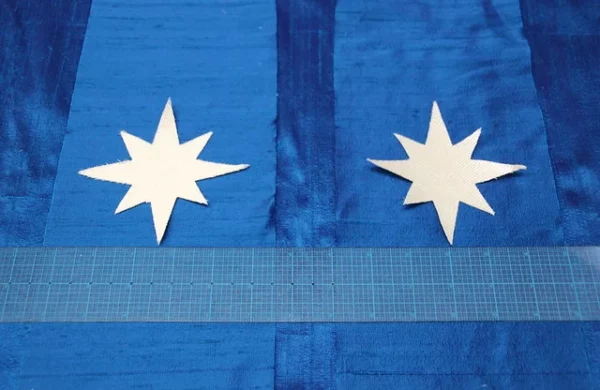
The design motif for the Advent stole is a simple star worked in Cloth of Silver. This simple design would be great to work with an embroidery patch and heat press system. The stars are outlined with a satin stitch, and detail stitches are added in the centers. A few additional stitching lines may be added to create the rays that “shine on the place where the Christ Child lays.
Like this:
Like Loading...
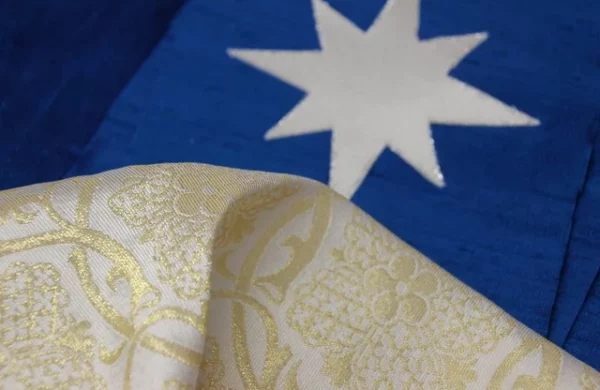
Advent stoles. Using cloth of silver, this star shape will be cut and appliqued to the stole, and outlined with a soft metallic gold thread.
Like this:
Like Loading...
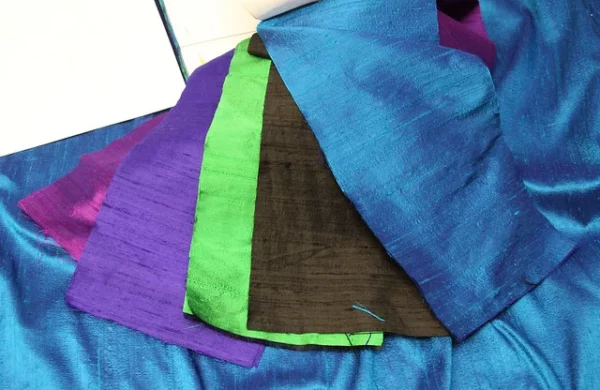
Stole Set It has been far too long since any new projects have been underway in the Ecclesiastical Sewing workroom. For tonight, we shall have a quiet peek at… Read more Stole Set →
Like this:
Like Loading...
Update on Changes Update on Changes. Getting a new online business up and rolling has its fair share of challenges. There are samples to collect, fabrics and trims to source, patterns to draft, and sample garments to create. Throw in a few life moments like a college graduation, wedding, and a remodel, along with numerous photography sessions needed to capture images of stunning Ecclesiastical Fabrics and trims…..and yes, it does take time to pull it all together. The original plan was to launch the new online storefront in early… Read more Update on Changes →
Like this:
Like Loading...
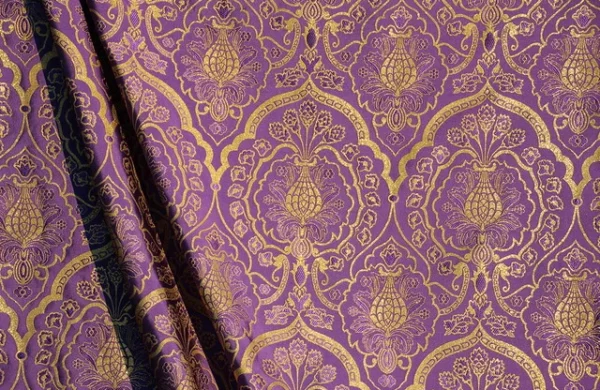
Wakefield employs several design details with the combination of different thread tones, textures, and colors.
Like this:
Like Loading...
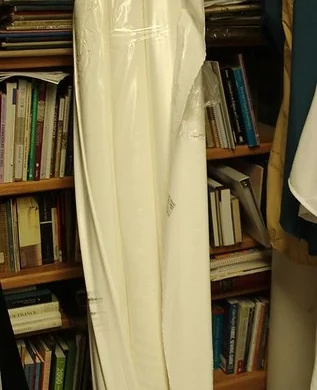
An assortment of linens has arrived, perfect for creating altar linens. From lightweight cambric for sheer veils to fine linens ideal for intricate needlework, There’s even linen suited for making traditional Albs, and a range of yarn sizes perfect for hemstitching. Also with various widths, starting from 54 inches and going up to 120 inches.
Like this:
Like Loading...

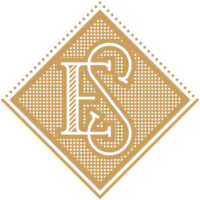












You must be logged in to post a comment.